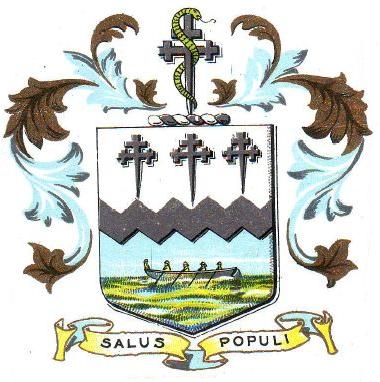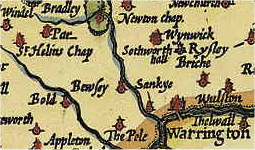|
Merseybus
Merseybus was a bus operator running bus and coach services predominantly in and around Merseyside, England. Based at Edge Lane, Liverpool, Merseybus was formed as an "arm's length" operation of the Merseyside Passenger Transport Executive (Merseyside PTE) out of its bus operations following bus deregulation in Great Britain and was later sold to Merseybus management and staff in a £5.9 million Employee Share Ownership Plan in 1993, forming the core of MTL (transport company), MTL's bus operations. Merseybus was subsequently sold alongside all MTL operations to Arriva on 17 February 2000, and operations today trade under Arriva North West. History Formation In advance of the Bus deregulation in Great Britain, deregulation of local bus and coach services on 26 October 1986, which ordered the break-up of the passenger transport executives of the United Kingdom, Merseyside PTE's bus operations, branded as 'Merseyside Transport', were transferred to a new company named Mersey ... [...More Info...] [...Related Items...] OR: [Wikipedia] [Google] [Baidu] |
Leyland Titan (B15)
The Leyland B15 Titan is a rear-engined double-decker bus manufactured by Leyland between 1977 and 1984, primarily for London Transport. Development The Titan was conceived in 1973 as project B15 and was intended as a replacement for the Bristol VRT, Daimler Fleetline and Leyland Atlantean. Following the success of the single-decker Leyland National, it was decided, from the outset, that the vehicle would be very standardised and of integral construction. This allowed more flexibility in the location of mechanical components and allowed a reduced step-height. The move away from body-on-chassis construction caused concern for the bodybuilders, who had already lost market share to the Leyland National. Talks regarding licensing agreements were held with Alexander and Northern Counties, both major suppliers to their respective local markets, but no agreements were reached. Leyland saw London Transport (LT) as a major market, so the specification was heavily influenced by th ... [...More Info...] [...Related Items...] OR: [Wikipedia] [Google] [Baidu] |
Merseyside Passenger Transport Authority
Merseytravel is a public transport body and the passenger transport executive of the Liverpool City Region Combined Authority responsible for delivering Public transport and other transport functions in the Liverpool City Region. It was originally established on 1 December 1969 as the Merseyside Passenger Transport Executive. In July 2024, it was announced it is to be rebranded as Transport for Liverpool City Region (TfLCR) in the future. Governance The Merseyside Passenger Transport Authority and Merseyside Passenger Transport Executive were established as a result of the Transport Act 1968. The authority, which was responsible for transport strategy and policy, included representatives from 18 different councils. The executive was responsible for day-to-day operation of transport services. In 1974, when the transport organisation's boundaries were made co-extensive with the new metropolitan county of Merseyside which was formally created by the Local Government Act 1972, th ... [...More Info...] [...Related Items...] OR: [Wikipedia] [Google] [Baidu] |
Birkenhead
Birkenhead () is a town in the Metropolitan Borough of Wirral, Merseyside, England. The town is on the Wirral Peninsula, along the west bank of the River Mersey, opposite Liverpool. It lies within the Historic counties of England, historic county boundaries of Cheshire, and became part of Merseyside in 1974. At the 2021 United Kingdom census, 2021 census, the built up area as defined by the Office for National Statistics had a population of 109,835. Birkenhead Priory and the Mersey Ferry were established in the 12th century. In the 19th century, Birkenhead expanded greatly as a consequence of the Industrial Revolution, leading to a shipbuilding firm which became Cammell Laird. A Great Float, seaport was established. As the town grew, Birkenhead Park and Hamilton Square were laid out. The first street tramway in Britain was built, followed by the Mersey Railway which connected Birkenhead and Liverpool through the world's first railway tunnel beneath a tidal estuary. In the sec ... [...More Info...] [...Related Items...] OR: [Wikipedia] [Google] [Baidu] |
Wirral Peninsula
The Wirral Peninsula (), known locally as the Wirral, is a peninsula in North West England. The roughly rectangular peninsula is about long and wide, and is bounded by the Dee Estuary to the west, the Mersey Estuary to the east, and Liverpool Bay to the north. Historically, the Wirral was wholly in Cheshire; in the Domesday Book, its border with the rest of the county was placed at "two arrow falls from Chester city walls". However, since the Local Government Act 1972, only the southern third has been in Cheshire, with almost all the rest lying in the Metropolitan Borough of Wirral, Merseyside. An area of saltmarsh and reclaimed land adjoining the south-west of the peninsula lies in the Welsh county of Flintshire. Toponymy The name Wirral literally means " myrtle corner", from the Old English , a myrtle tree, and , an angle, corner or slope. It is supposed that the land was once overgrown with bog myrtle, a plant no longer found in the area, but plentiful around Form ... [...More Info...] [...Related Items...] OR: [Wikipedia] [Google] [Baidu] |
Southport
Southport is a seaside resort, seaside town in the Metropolitan Borough of Sefton in Merseyside, England. It lies on the West Lancashire Coastal Plain, West Lancashire coastal plain and the east coast of the Irish Sea, approximately north of Liverpool and southwest of Preston, Lancashire, Preston. At the United Kingdom Census 2021, 2021 census, Southport had a population of 94,421, making it the List of North West England cities and metropolitan areas by population, eleventh most populous settlement in North West England and the third most populous settlement in the Liverpool City Region. The town was founded in 1792 by William Sutton (Southport), William Sutton, an innkeeper from Churchtown, Merseyside, Churchtown, who built a bathing house at what is now the south end of Lord Street, Southport, Lord Street.''North Meols and Southport – a History'', Chapter 9, Peter Aughton (1988) The area was previously known as South Hawes, and was sparsely populated and dominated ... [...More Info...] [...Related Items...] OR: [Wikipedia] [Google] [Baidu] |
St Helens, Merseyside
St Helens () is a town in Merseyside, England, with a population of 117,308. It is the administrative centre of the Metropolitan Borough of St Helens which had a population of 183,200 at the United Kingdom Census 2021, 2021 Census. The town is north of the River Mersey, in the south-west part of Historic counties of England, historic Lancashire. The town was initially a small settlement within the historic county's ancient hundred (county division), ''hundred'' of West Derby (hundred), West Derby in the Township (England), township of Windle, St Helens, Windle but by the mid-1700s the town had developed into a larger urban area beyond the townships borders. By 1838 the council was formally made responsible for the administration of Windle and the three other townships of Eccleston, St Helens, Eccleston, Parr, St Helens, Parr and Sutton, St Helens, Sutton that were to form the town's traditional shape. In 1868 the town was incorporated as a municipal borough, then later became ... [...More Info...] [...Related Items...] OR: [Wikipedia] [Google] [Baidu] |
Speke
Speke () is a suburb of Liverpool, Merseyside, England. It is southeast of the city centre. Located near the widest part of the River Mersey, it is bordered by the suburbs of Garston and Hunts Cross, and nearby to Halewood, Hale Village, and Widnes. The rural area of Oglet borders its south. History The name derives from the Old English ''Spec'', meaning 'brushwood' or from Middle English ''Spek(e)'', meaning 'woodpecker'. It was known as ''Spec'' in the ''Domesday Book'', which gave Speke Hall as one of the properties held by Uctred. Today Speke Hall, now a Tudor wood-framed house, is open to the public. In the mid 14th century, the manors of Speke, Whiston, Skelmersdale, and Parr were held by William Dacre, 2nd Baron Dacre. Speke was formerly a township in the parish of Childwall, in 1866 Speke became a separate civil parish, on 1 April 1932 the parish was abolished and merged with Liverpool. In 1931 the parish had a population of 384. Until the 1930s devel ... [...More Info...] [...Related Items...] OR: [Wikipedia] [Google] [Baidu] |
Garston, Merseyside
Garston is a district of Liverpool, in Merseyside, England. Historically in Lancashire, it is bordered by the suburbs of Aigburth, Allerton, and Speke. It lies on the Eastern banks of the River Mersey. History In medieval times, Garston was home to a group of Benedictine monks. The first recorded mention of settlement in Garston is of the Church of St Michael in 1235. By the 19th century, the area had become a small village. Garston was formerly a township and chapelry in the parish of Childwall, in 1866 Garston became a separate civil parish, from 1894 to 1902 Garston was an urban district, on 1 April 1922 the parish was abolished and merged with Liverpool. In 1921 the parish had a population of 28,729. A small dock was first built at Garston in 1793 for Blackburne's Saltworks, which still stands today. Garston's growth accelerated rapidly in the 1840s, when in 1846, the area's first dock was constructed and opened, under the auspices of the St Helens and Runcorn ... [...More Info...] [...Related Items...] OR: [Wikipedia] [Google] [Baidu] |
Walton, Merseyside
Walton is an area of Liverpool, in Merseyside, England, north of Anfield and east of Bootle and Orrell Park. Historically in Lancashire, it is largely residential, with a diverse population. History The name may derive from the same origin as Wales. The incoming Saxons called the earlier native inhabitants (the Celtic Britons) ''Walas'' or ''Wealas'', meaning "foreigner". Another possible etymology is ''Wald tun'', Old English for "Forest Town". Walton's recorded history starts with the death of Edward the Confessor, when Winestan held the manor of Walton. After the Norman conquest of 1066, Roger of Poitou included Walton in the lands he gave to his sheriff, Godfrey. In 1200, King John gave Walton to Richard de Meath, who left it to his brother, Henry de Walton. Henry's son William inherited the land, but died before his son Richard was of age, so Richard was made a ward of Nicholas de la Hose by the Earl of Derby and the estate was managed by nobles outside the family fo ... [...More Info...] [...Related Items...] OR: [Wikipedia] [Google] [Baidu] |
Gillmoss
Gillmoss is an area in north Liverpool, Merseyside, England, located between Croxteth, Fazakerley and Kirkby. Description Gillmoss is a predominantly industrial area with little residential housing although pockets exist around the East Lancashire Road, and parts have been described as a 'ghost town' after years of decay. More recently, a commercial development known as Stonebridge Park has been built as part of regeneration project in this part of north Liverpool which currently houses Euro Foodbrands Export Ltd, P.A Foods Ltd and Healthy Foods Online Ltd. One of Liverpool's largest bus depots, originally built by Liverpool Corporation Transport but now owned by Stagecoach A stagecoach (also: stage coach, stage, road coach, ) is a four-wheeled public transport coach used to carry paying passengers and light packages on journeys long enough to need a change of horses. It is strongly sprung and generally drawn by ..., is based in Gillmoss on the East Lancs Road. Gill ... [...More Info...] [...Related Items...] OR: [Wikipedia] [Google] [Baidu] |







